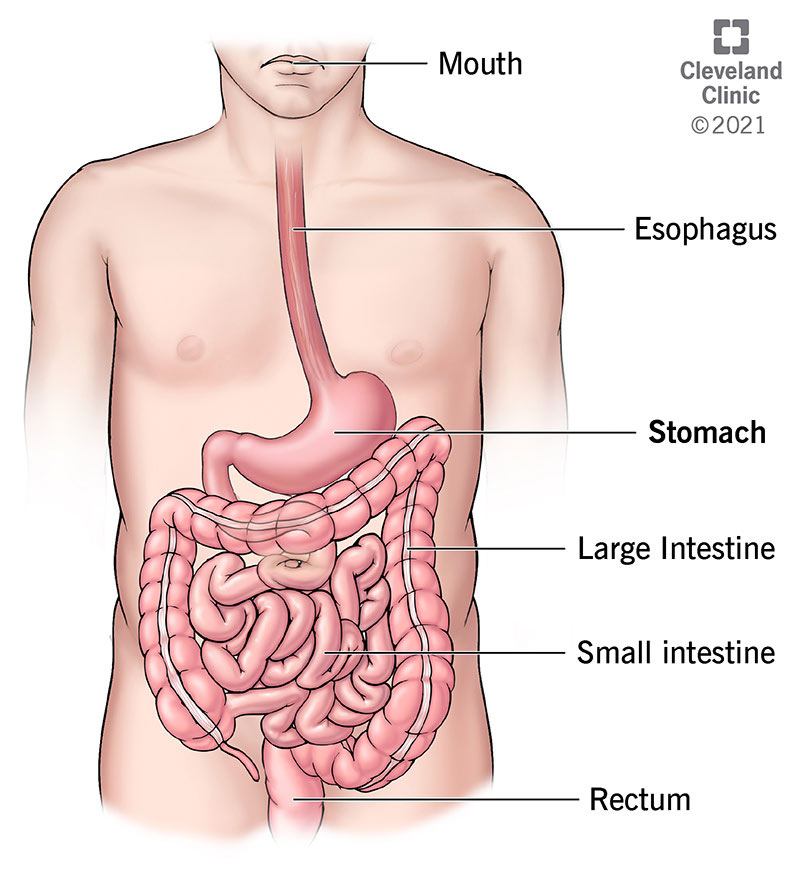
What is the Primary Function of the Digestive System?
The digestive system is a marvel of biological engineering, a complex network of organs and processes that ensures our bodies receive the nutrients needed for survival and growth. It is a fundamental system in human physiology, responsible for breaking down food into its basic components, absorbing these nutrients, and eliminating waste. The primary function of the digestive system can be summarized as the transformation of food into energy and essential molecules. In this comprehensive article, we will explore the intricacies of this remarkable system, its key components, and how it serves as the gateway to sustaining life and health.
Anatomy of the Digestive System
The digestive system is comprised of a series of organs that work together seamlessly to facilitate the digestion of food. These organs can be categorized into two groups: the alimentary canal (also known as the gastrointestinal tract) and accessory organs.
1. Alimentary Canal
The alimentary canal is a continuous, muscular tube that extends from the mouth to the anus. It includes the following organs:
- Mouth: The journey begins in the mouth, where mechanical digestion begins through chewing, and chemical digestion starts with the action of salivary enzymes.
- Pharynx: The pharynx is a shared passageway for both food and air, ensuring that food enters the esophagus while preventing it from entering the windpipe.
- Esophagus: The esophagus is a muscular tube that transports food from the pharynx to the stomach through coordinated muscle contractions called peristalsis.
- Stomach: The stomach is a muscular organ that continues mechanical digestion through churning and initiates chemical digestion by releasing gastric juices, primarily hydrochloric acid and pepsin.
- Small Intestine: The small intestine is where most digestion and nutrient absorption occur. It is divided into three segments: the duodenum, jejunum, and ileum.
- Large Intestine: The large intestine primarily absorbs water and electrolytes and forms and stores feces until elimination. It includes the cecum, colon, rectum, and anus.
2. Accessory Organs
Accessory organs are not part of the alimentary canal but play vital roles in digestion:
- Liver: The liver produces bile, which emulsifies fat, making it easier for enzymes to break it down in the small intestine. The liver also detoxifies and stores nutrients.
- Gallbladder: The gallbladder stores and concentrates bile produced by the liver and releases it into the small intestine when needed.
- Pancreas: The pancreas secretes digestive enzymes (e.g., amylase, lipase, proteases) into the small intestine to further break down carbohydrates, fats, and proteins.
The Digestive Process
Digestion is a multistep process that involves both mechanical and chemical processes:
1. Ingestion
The process begins with the intake of food through the mouth. Here, mechanical digestion starts as the teeth break down large food particles, while salivary glands release saliva containing enzymes like amylase, initiating the chemical breakdown of carbohydrates.
2. Propulsion
Peristalsis, coordinated muscle contractions, moves food from the mouth to the stomach via the esophagus. In the stomach, further mechanical digestion occurs as the muscular walls churn and mix food with gastric juices.
3. Digestion
The stomach’s acidic environment activates pepsin, which begins the breakdown of proteins. The partially digested food, now called chyme, moves into the small intestine, where bile from the liver and pancreatic enzymes aid in the digestion of fats, carbohydrates, and proteins.
4. Absorption
The small intestine is the primary site of nutrient absorption. Nutrients, broken down into their smallest forms (e.g., glucose, amino acids, fatty acids), are absorbed into the bloodstream through the intestinal walls and transported throughout the body.
5. Elimination
Unabsorbed food particles and waste products pass into the large intestine, where water and electrolytes are absorbed, forming feces. Feces are stored in the rectum until elimination through the anus.
The Role of the Digestive System in Nutrient Utilization
The primary function of the digestive system is to break down food into its basic components (nutrients), which the body can then use for various purposes:
- Energy Production: Carbohydrates, fats, and proteins are converted into energy through metabolic processes, providing the fuel necessary for bodily functions and physical activity.
- Tissue Growth and Repair: Amino acids from protein digestion are used to build and repair tissues, including muscles, organs, and enzymes.
- Vitamin and Mineral Absorption: The digestive system also plays a crucial role in absorbing essential vitamins and minerals, such as vitamin D, calcium, and iron, which are necessary for overall health.
- Immune Function: The gut-associated lymphoid tissue (GALT) within the digestive system helps protect against harmful microorganisms and supports the immune system.
Conclusion
The primary function of the digestive system is to transform food into energy and essential molecules that the body needs for growth, repair, and overall function. It is a highly coordinated and complex system involving multiple organs and processes, each with a specific role in breaking down, absorbing, and utilizing nutrients. Understanding the digestive system’s intricacies is not only essential for appreciating the marvel of the human body but also for making informed choices about nutrition and maintaining good health.




